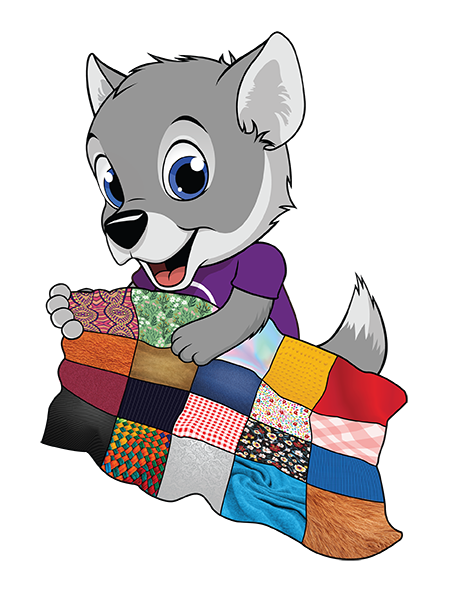That All Children May Read Early Literacy Program

About the Touching and Sensing Skill
Children with visual impairments need to develop their senses and hand skills to encourage language and concept development. Hand skills are necessary for a child who will one day learn to read braille, but they are also useful to children with any degree of visual ability. It is recommended that children have room to move and explore their environment. This allows children to familiarize themselves with the world around them through sensory observation.
Touching and Sensing Recommended Readings
Touching and Sensing Activities
Babies (Birth through One)
- As you read a book, bring out toys that represent different characters or objects in the book and let your baby feel the item when it is mentioned in the story.
- All babies benefit from tummy time. This can be obtained by having your baby lay on your chest, placing your baby face-down across your lap, or laying them on a blanket on the floor. Engage with your baby by talking to them and bringing in toys that make noise.
- Let your baby feel different textures, whether that is a soft blanket or smooth bottle. Make sure to describe what they are feeling and how it feels. If the item also makes a sound, let them hear it. Continuing to do this will give them a better understanding of their surroundings.
- During bath time, scrub your baby’s fingers and toes and talk about fingers and toes. Also let your baby safely explore your face by introducing them to your nose, lips, cheeks, etc. This activity helps babies become aware of their own bodies and those of others.
Toddlers (Two through Three)
- Toddlers benefit from touching everyday objects. When introducing an object, such as a bowl or spoon, give more detail about the object and its use. Talk about the texture, weight, and shape of the bowl. Describe how the bowl is used. Do the same with the spoon. Make sure to use lots of descriptive words. These experiences give your toddler a better understanding of the items.
- Read a print/braille tactile book with your toddler. Let them feel the pictures as well as the braille while reading. These books help your toddler understand the characters in the story. Print/braille books also give your toddler an understanding of hand placement for braille. Even those who are not going to be braille readers can benefit from print/braille books because it exposes them to the concept of gaining information through touch.
- Take your toddler to the park and let them feel different objects. This may include playing in a sandbox, touching trees or flowers, or sliding down a slide.
Preschool (Four through Six)
- As you and your preschooler visit different places, let them discover environmental braille. Public buildings have specific signs that include braille that your preschooler can experience.
- If possible, take your preschooler to a zoo or petting zoo. At a zoo, describe the different animals and let them know what they are hearing and smelling. At a petting zoo, your preschooler will not only be able to hear and smell the animals, but also feel them. Being able to feel the animals gives a better understanding of the size and texture of the animal.
- Get your preschooler engaged with different crafts. Examples of crafts may include coloring on a sheet with raised lines, or letting them paste different textured items, like cotton balls and sandpaper, to a piece of paper.